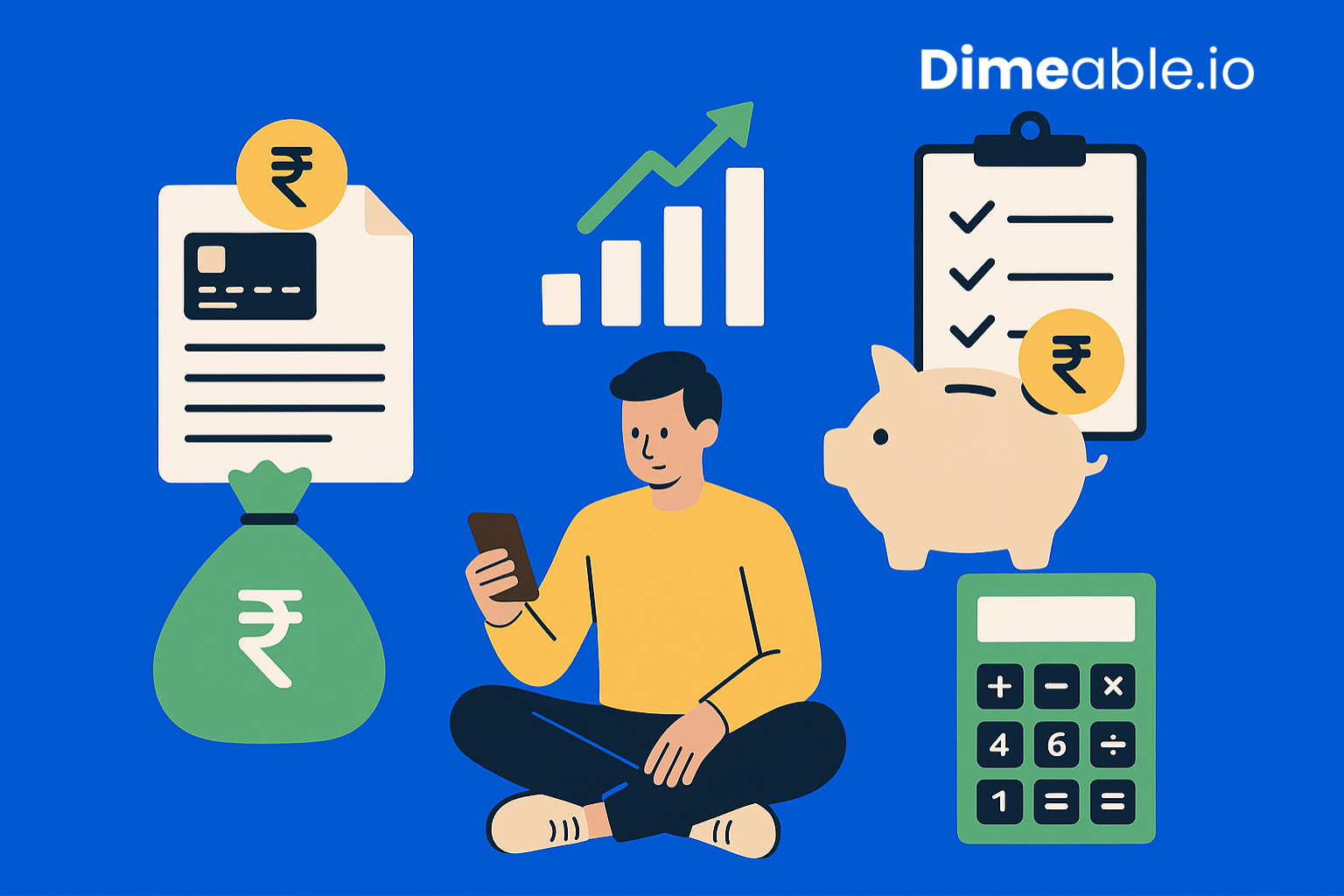Achieving financial freedom is a dream many of us nurture. It means having the financial security to live life on your terms. However, financial freedom isn’t a single milestone but a journey comprising various stages, each offering greater control over your life and finances. Let’s explore these stages in the context of life in India and how you can progress toward true financial independence.
Stage 0: Dependence
This is the starting point for everyone. In this stage, you rely on others for financial support, such as your parents or family, or you’re spending more than you earn, accumulating debt along the way. This might include relying on family during college or while starting your career. Breaking out of this stage requires increasing your income and reducing your expenses to achieve a positive cash flow.
Stage 1: Solvency
Solvency means you can meet your financial commitments independently. Your income exceeds your expenses, and you’ve stopped accumulating debt. At this stage, you’re self-reliant, no longer dependent on your parents or loans to cover daily needs. Many young professionals in India achieve this stage after landing their first job, especially in metros where job opportunities are abundant.
Actionable Tips:
- Track your income and expenses diligently using budgeting apps.
- Focus on eliminating high-interest debts like credit card balances.
- Start small savings habits, like investing in recurring deposits or SIPs (Systematic Investment Plans).
Stage 2: Stability
In the stability stage, you have repaid all consumer debt (credit cards, personal loans) and built an emergency fund. This fund acts as a financial cushion to cover 3-6 months’ worth of expenses, protecting you from unexpected events like job loss or medical emergencies. You may still have some “productive debt” like an education loan or home loan, but you’ve established financial discipline.
Actionable Tips:
- Build an emergency fund by saving a fixed percentage of your income each month.
- Consider insurance policies to safeguard against risks, such as health and term life insurance.
- Prioritize clearing high-interest debts first.
Stage 3: Agency
Agency is the point where you can live and work on your own terms. You’ve cleared all debts, including student loans and your home loan, if any. You have enough savings to quit your job or change your career without financial stress. This stage offers significant freedom and is often termed as having “screw-you money” in global parlance.
Actionable Tips:
- Invest in diversified instruments like mutual funds, equities, or gold to grow your wealth.
- Keep building a larger financial buffer that allows career flexibility.
- Explore side hustles or entrepreneurial ventures that align with your passions.
Stage 4: Security
At this stage, your investment income can cover your basic living expenses indefinitely. You’ve achieved a level of financial security where you can sustain a modest lifestyle without needing active income. In India, this might mean your investments cover rent, groceries, utilities, and other essentials.
Actionable Tips:
- Increase your investment portfolio with a mix of fixed deposits, mutual funds, and stocks.
- Learn about passive income sources like rental income or dividends.
- Keep lifestyle inflation in check and avoid unnecessary luxury expenses.
Stage 5: Independence
Financial independence means your investment income can sustain your current lifestyle, including discretionary spending like dining out, vacations, and hobbies. At this point, you’re free from financial stress and can focus on activities you genuinely enjoy.
Actionable Tips:
- Diversify your portfolio further to include real estate, international equities, and retirement-focused plans.
- Optimize your tax-saving investments under Section 80C, 80D, and other relevant sections.
- Periodically review your financial goals and adjust investments accordingly.
Stage 6: Abundance
This is the pinnacle of financial freedom. Your passive income is so substantial that it not only covers your lifestyle but allows you to pursue your dreams without financial constraints. You can give back to society, indulge in luxuries, and support causes close to your heart. At this stage, you’re not just surviving or thriving — you’re flourishing.
Actionable Tips:
- Set up a philanthropic fund or contribute to social causes you care about.
- Explore wealth creation opportunities, such as launching a business or mentoring others.
- Ensure your estate planning is in place, including wills and trusts, to pass on wealth responsibly.
The Road Ahead
The journey to financial freedom requires consistent effort, discipline, and smart money habits. Whether you’re repaying debt or building wealth, each stage of financial freedom is a step closer to living life on your own terms. Here’s how you can progress:
- Define Your Goals: Know what financial independence means to you. Create a roadmap to achieve it.
- Build Good Habits: Save regularly, invest wisely, and control unnecessary expenses.
- Stay Educated: Continuously learn about personal finance and investment opportunities.
Remember, in India, the concept of financial freedom is deeply personal. For some, it might mean owning a home; for others, it could be retiring early to travel the world. The key is to define your vision and work towards it step by step. Start today, and your future self will thank you!

